Visit Library for MBP Pro eBooks |
A few days ago, I returned from Namibia after traveling with guests on the first of two tours I’m running there this year. My fiscal year for Martin Bailey Photography K.K. ended at the end of April, so I have spent the first few days at home finalizing my accounts to hand over to my accountant to check before we close out the year and submit my tax reports. I don’t think I ever mentioned this, but after returning from Namibia last year, I changed to a new accounting system that provides me full control and visibility over my accounts, and to facilitate that change, I also had to change to a new Tax Accountant. I’d worked with my previous accountant for 12 years, so it was a difficult decision, but after the initial couple of months required to deepen my understanding of accounting, I’m thrilled to now be in complete control of my accounts, and be able to run reports at any time.
I couldn’t have done it without the patience and kind help from my new accountant at the Zero1chi Tax Office. These guys have been a huge help as I moved my accounts to the new system and learned how to use it. I don’t know if they speak English as we always communicate in Japanese, but if you are setting up or running a business here in Japan, Zero1chi are highly recommended.
Anyway, back to Namibia, and the trip was full of surprises this year. First of all, when I arrived the runway was wet. It had just rained, and I’ve never known it to rain in April. Apparently there had been little rain when it should have rained at around December and January, but the day before I arrived, a thunder storm prevented a plane carrying three of our guests from landing, and they had to turn back to Johannesburg for a few hours.
It was also hot! Much hotter than usual. Some of the inland temperatures were 12 degrees higher than the average temperature for this time of year. One place with an average temperature of 24 °C was 36 °C, and although it was very dry, it was certainly bordering on uncomfortable some days. It did start to cool down towards the end of the trip, to what I am accustomed to at this time of year, making it much more pleasant.
We started the photography of the trip the day after meeting with the group, as we drove down to Keetmanshoop to the Quiver Tree Forest, where we’d spend one night, starting with a sunset shoot, then return for some astrophotography. Here is my favorite shot from the sunset. I’m not sure what was happening with the light in this shot. It looks like something below the horizon was blocking the light to the right of the center tree, making the sky there bluer than the rest of the horizon. It looks almost like a sunset rainbow though, so I’ll take what I get.
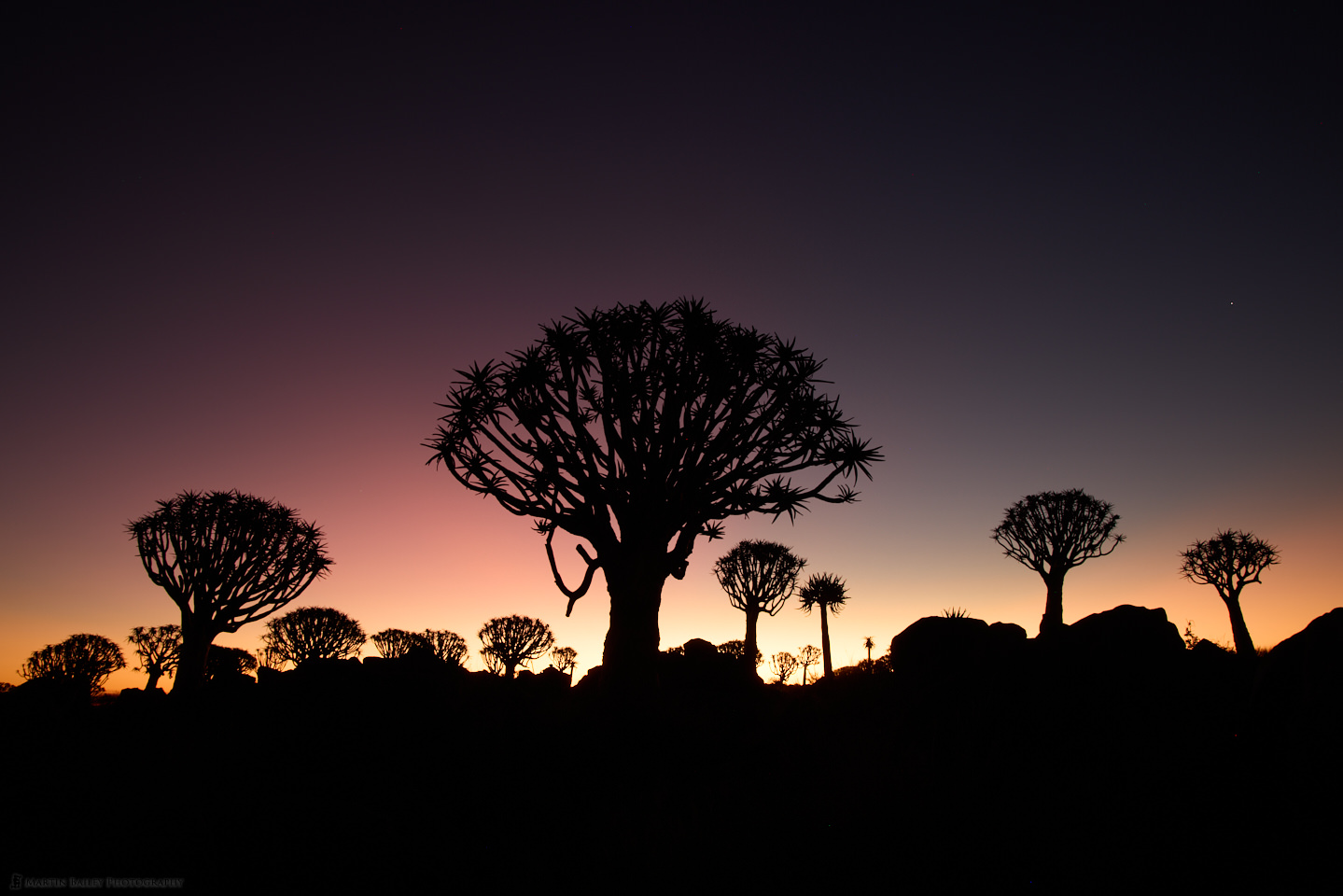
After returning to the lodge for dinner, we came back for an hour or so to photograph the Milky Way and night sky. The Milky Way was not high enough in the sky to get the galactic core in our shots, but as we have a busy day the following day too, I don’t want to keep the group out too late, and I still like our results. Here is the first of two shots, initially here with my Canon RF 15-35mm ƒ/2.8 lens. I was at 16mm for this shot, and I used what I call the 320 Rule to calculate my shutter speed.
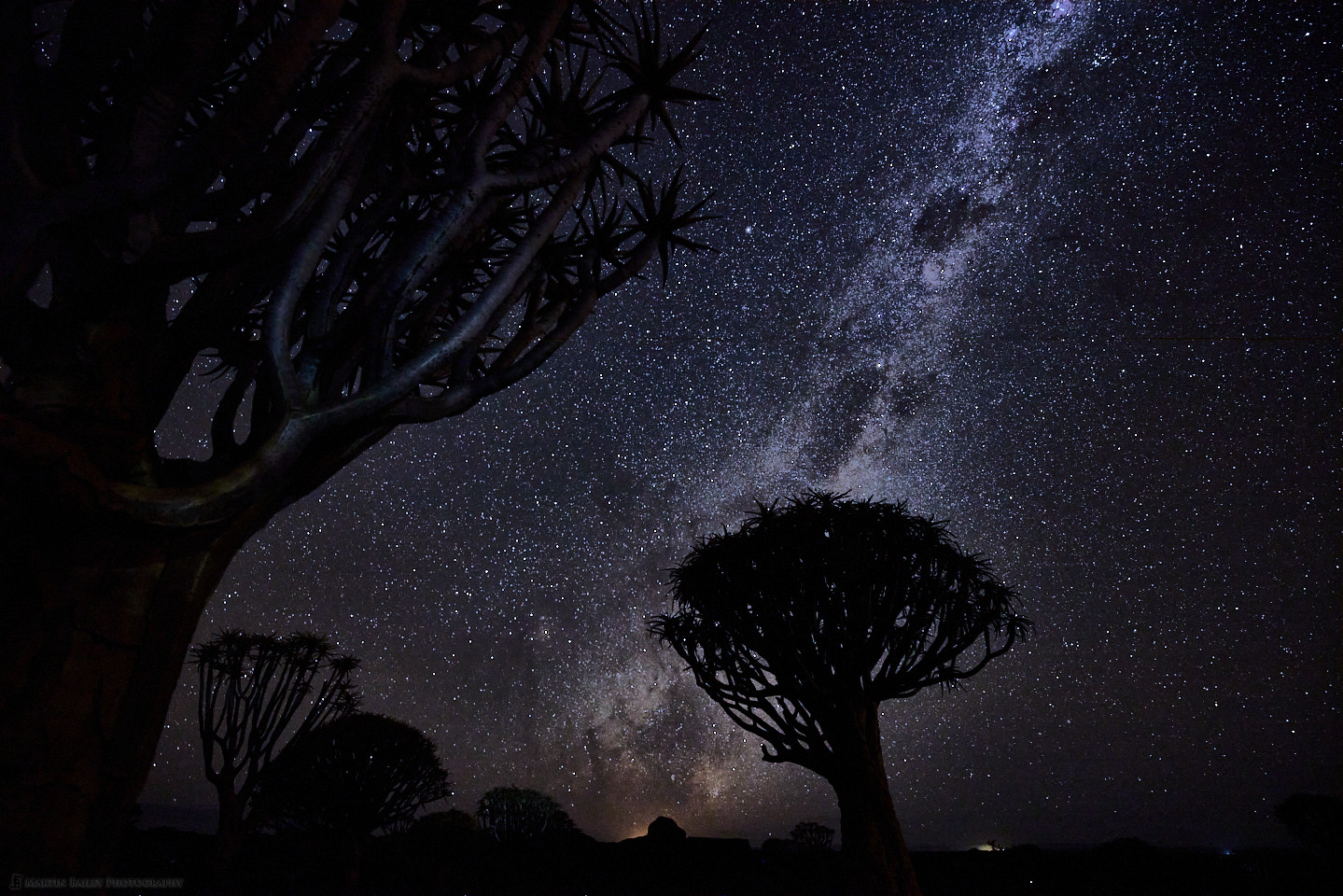
You may have heard of the 600 Rule and the 500 Rule, by which you calculate the shutter speed for astrophotography by dividing 500 or 600 by your focal length. For example, I shot this image at 16mm, so with the 500 Rule, you’d divide 500 by 16 to get 31.25, so your shutter speed would be 30 seconds. I spent a fair amount of time in Namibia one night to find that a 30 second exposure actually caused the stars to elongate a little more than I want them to, so I experimented with some smaller numbers and over the years have settled between 320 and 350 as my starting point. This gives me a 20 second exposure, which is what I used for this shot and it gives me nice points for the stars, not egg shaped stars.
Of course, you also have to decide on your aperture and ISO, and to avoid making all the colored stars white, I used ISO 3200 and an aperture of ƒ/3.5. If I didn’t have the trees in the foreground, I’d have opened up the aperture to ƒ/2.8 but I wanted to sharpen up that foreground tree just slightly more.
You might also recall from Podcast 811 that I took an inexpensive 11mm Fisheye lens from TTArtisan on this trip, and the main reason was to see what it would enable me to capture of this Milky Way scene. Although I was pretty busy helping my guests with their photography and almost left without shooting with the Fisheye, I was able to throw it onto my Canon EOS R5 camera for a few frames before we left. Using the 320 rule I could have extended my shutter speed to 30 seconds at 11mm, but I was in too much of a hurry, so I simply left my shutter speed at 20 seconds.
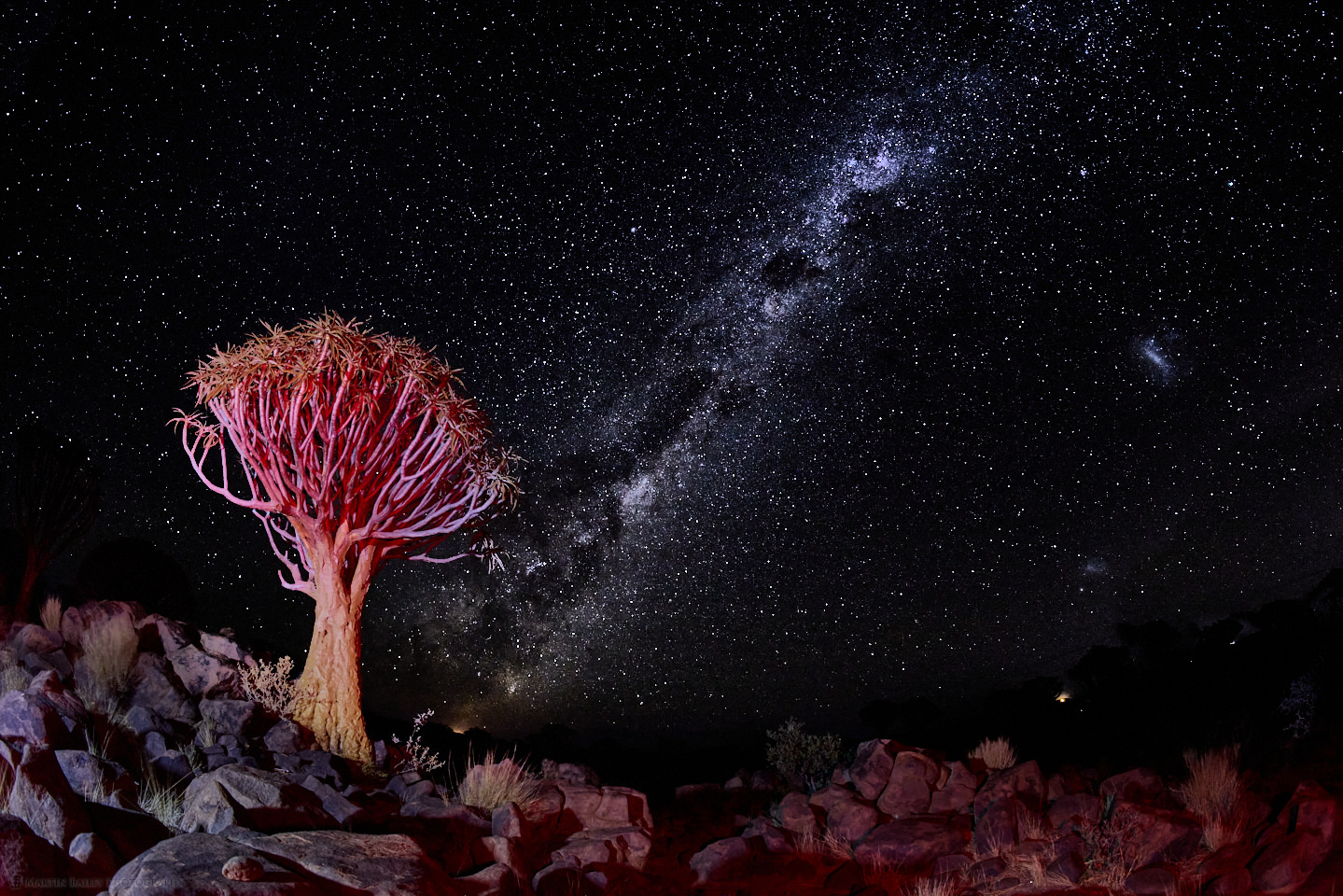
You’ll see that the additional width provided by increasing my focal length by 5mm enabled me to capture what I think might be the additional small and large Magellanic cloud to the right of the main Milky Way section, although I believe the very similar looking Andromeda galaxy is in this location at this time of year, but I’m not sure that it should register so large in a photo. If anyone in the know with the night sky can shed any light on this please leave a note in the comments below. We were also doing a bit of light painting, using both the red and white light on my head lamp to waft a second or so of light across the foreground Quiver Tree and rocks to anchor the base of the photo.
We were back out before dawn the following morning for a brief visit to the Giant’s Playground, where I initially shot the rock formations that I always share, but because I always share that, here, for a change, is a shot of a lone Quiver Tree in the last few moments of the sunrise before the sun popped above the horizon and changed the lighting.
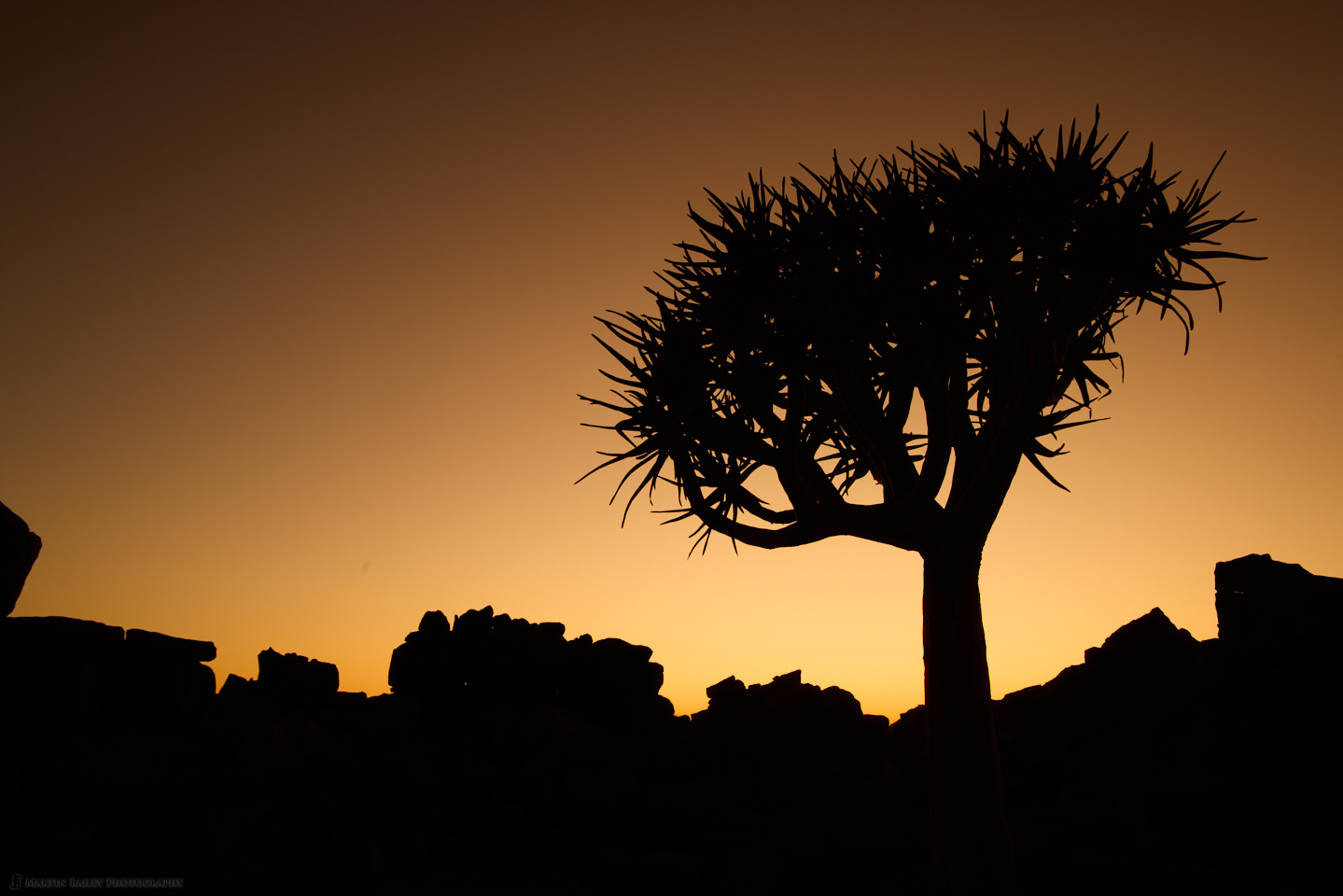
Note that I often select the Shade White Balance on my camera when shooting sunset and sunrise as it intensifies the color in the sky quite a lot, and can even liven up what would otherwise be a pretty bland looking sky.
After breakfast we drove west to the coast, and spend the afternoon photographing the houses at the deserted diamond mine town of Kolmanskop. It’s been amazing watching the town gradually taken over by the desert over the last ten years. Some building are no longer safe to go inside, and some are aging nicely, like this building with the gaps between the roof slats, allowing the sun to create beautiful high-contrast patterns on the walls around noon time. Here also is a shot of the Hospital, and you can see the large crack in the wall as the building is obviously shifting on its foundations as the sand and rock below it move.
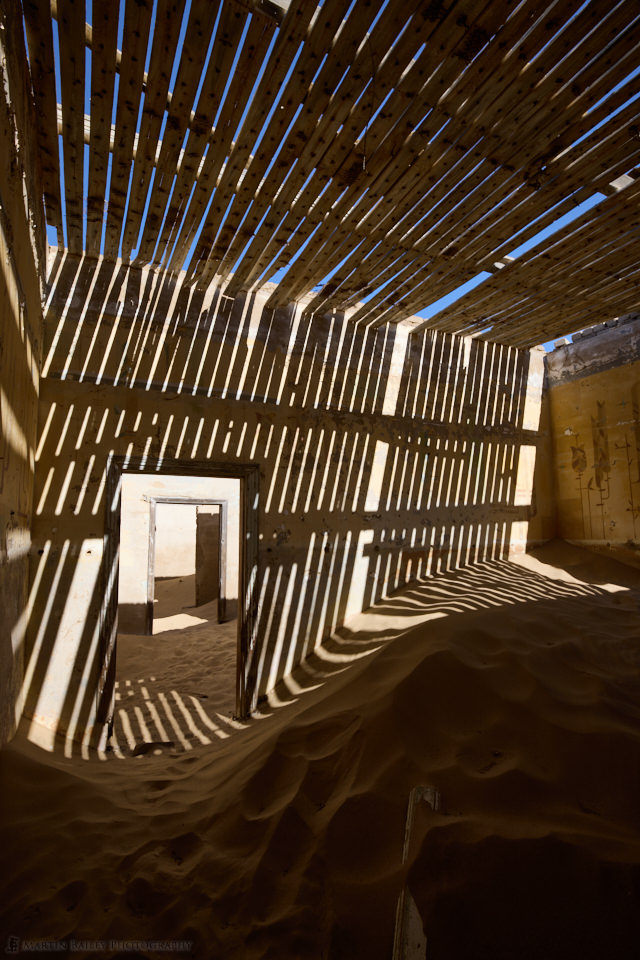
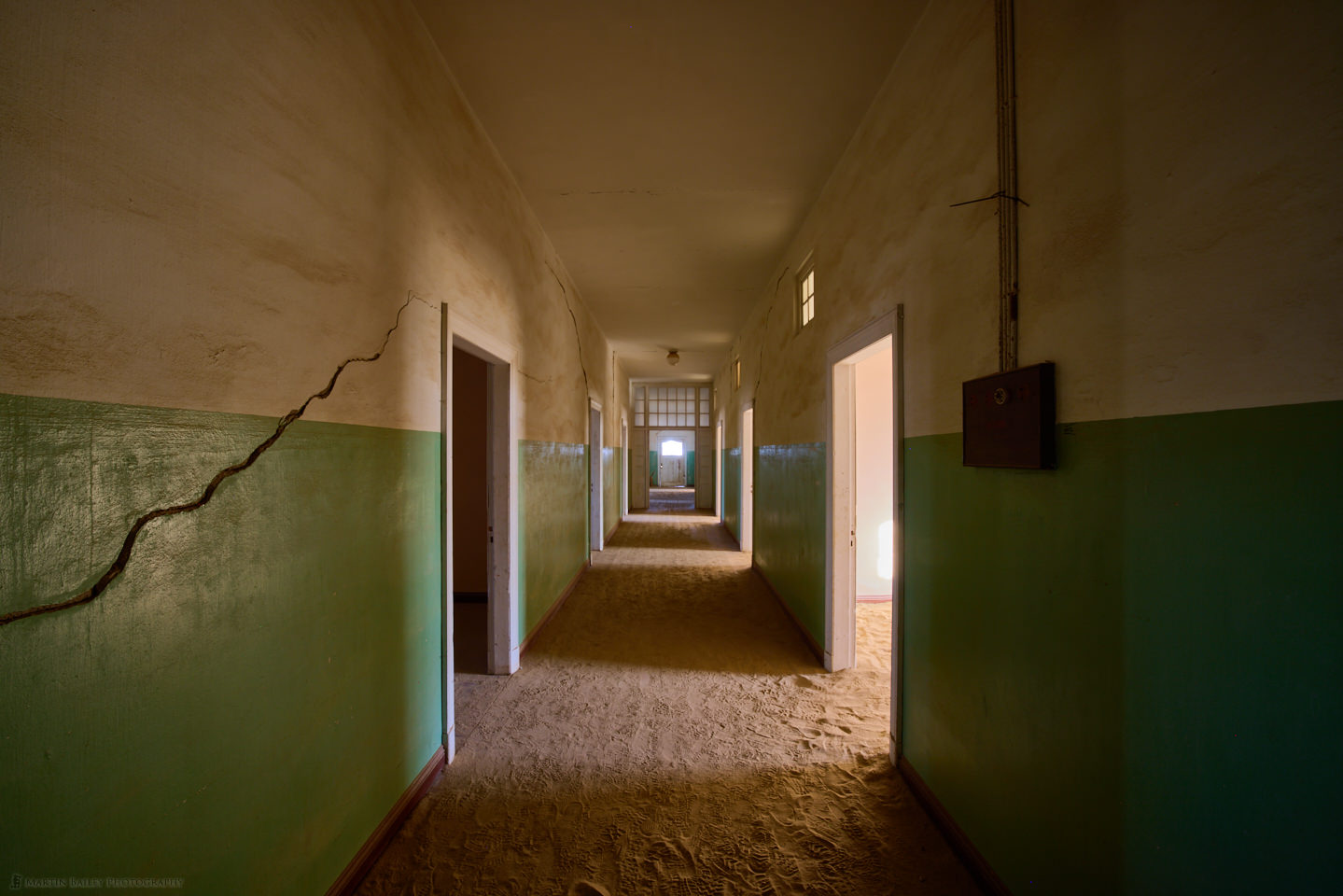
And here is a shot of one of the side rooms from the main corridor in the hospital. I find it really appealing to see the sand piling up in the building coming through the broken windows on the West side. I don’t worry about exposing for the outside light. I like to make it look dreamy by simply having the light pouring in through these small window spaces.
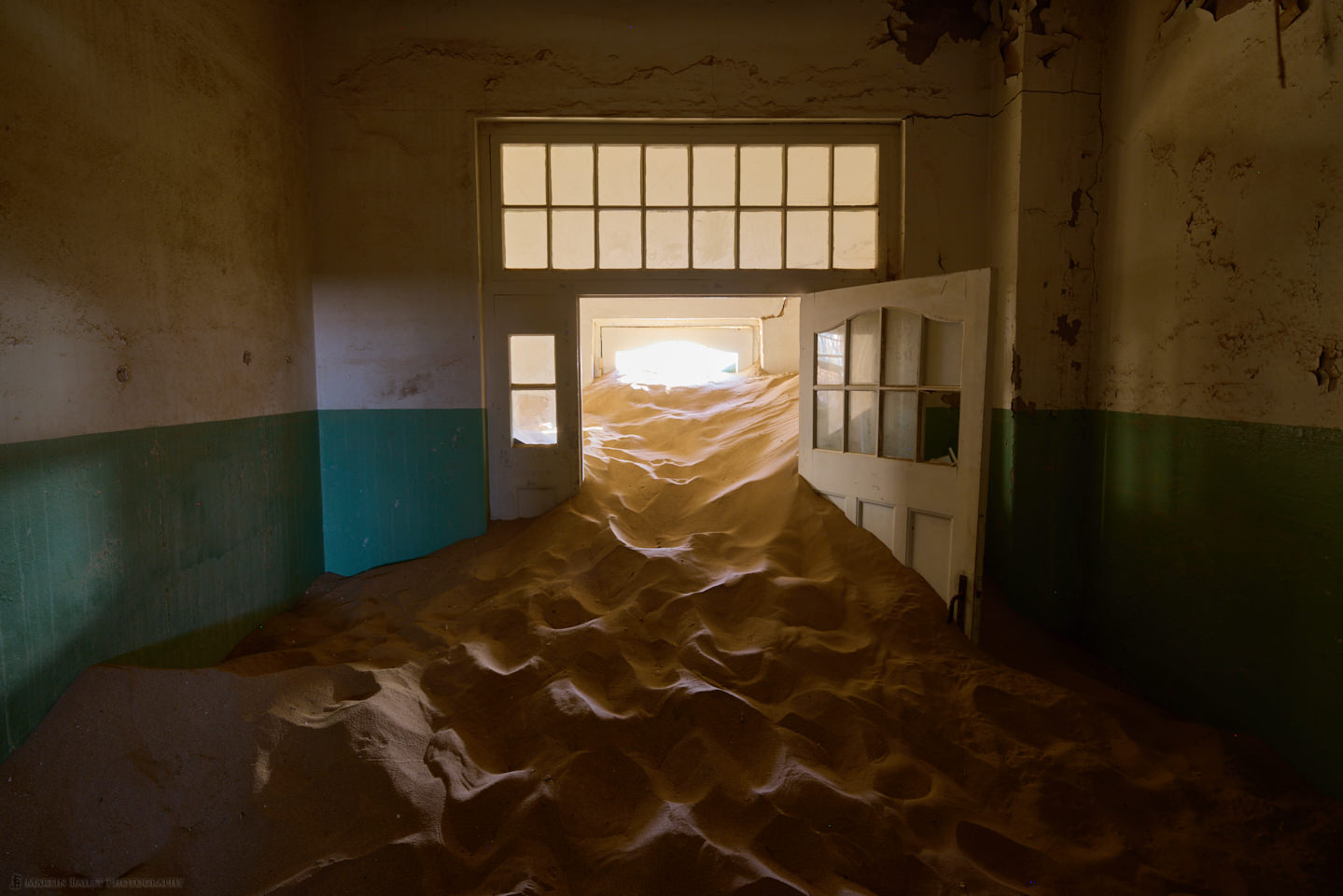
The following morning we visited the Elizabeth Bay deserted diamond mine, and photographed the remains of a town that will soon be completely gone. Many of the laborers quarters are still relatively in tact, as you can see from this first image. Whether or not these tiny compartments were beds for laborers or slaves depends on who you ask. Our guide, a Herero gentleman who I trust completely tells me it was the latter.
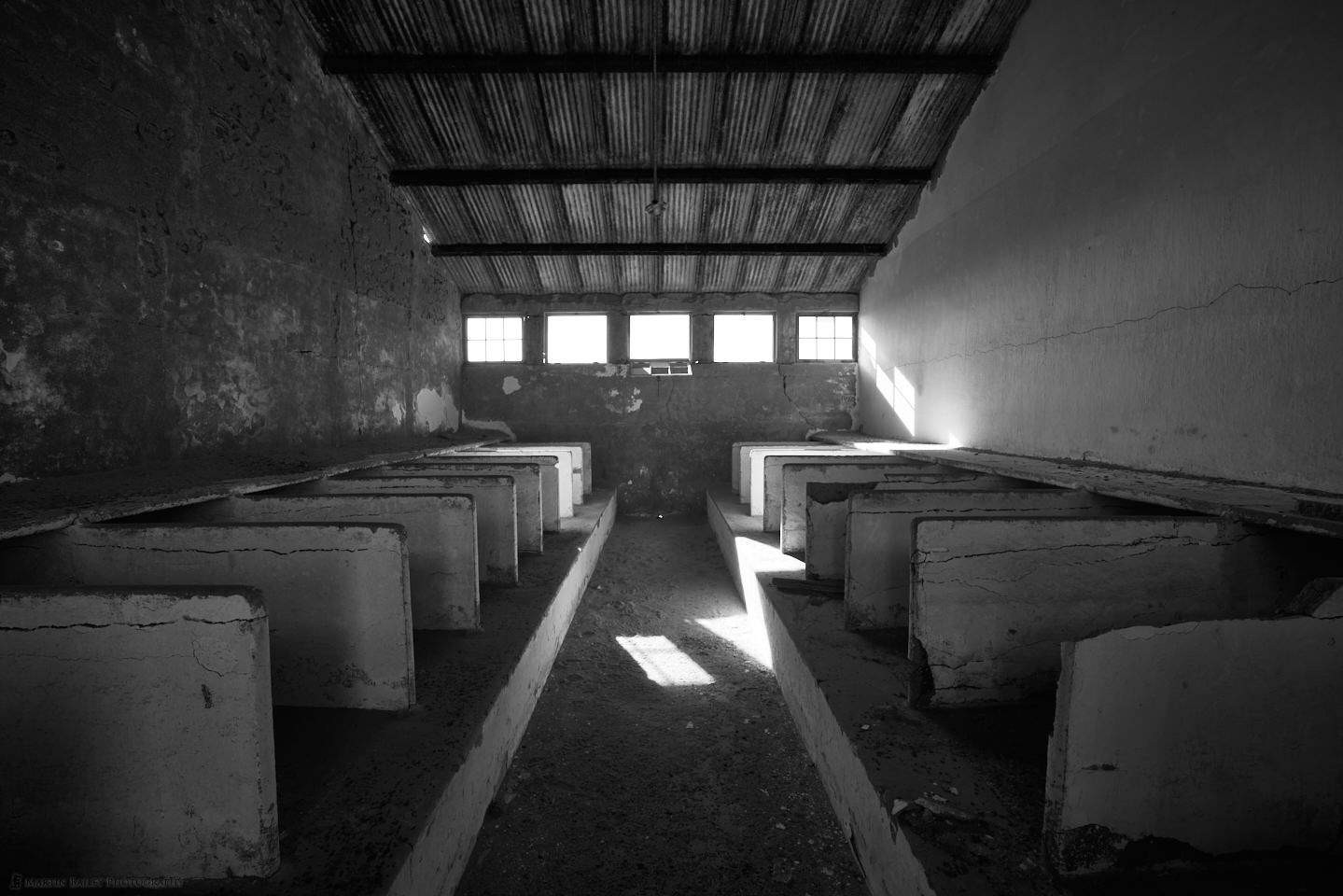
I generally convert all of my Elizabeth Bay images to black and white, as that is how the town feels to me. The actual color palette is mostly brown and faded whites, but this place deserves to be black and white, in both a positive and negative sense.
Here is another photo showing the double-decker sleeping quarters and a greater degree of decay in the building, as the front wall has now completely collapsed. This building was in-tact when I first started visiting Elizabeth Bay. It’s only been this last few years since the walls collapsed that I noticed the double-decker sleeping arrangement. I’m pleased really, as I’m not sure I could have handled walking into a dark room to that level of inhumanity.
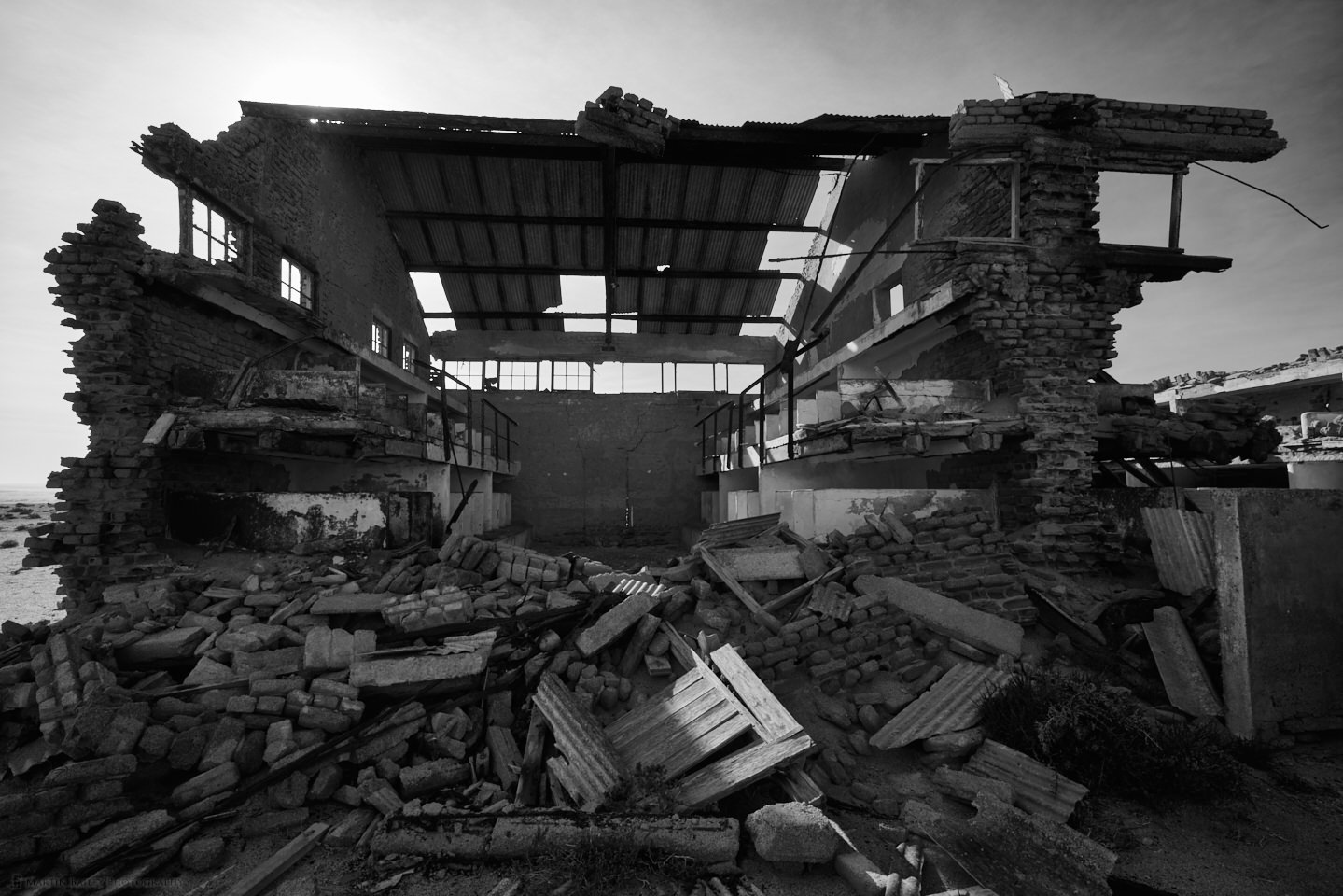
OK, so this next image completes our ten for this episode, and all of the images that I wanted to share from Elizabeth Bay. This building has now been almost completely reclaimed by the desert. It was nice to have a bit of detail in the sky too though, as it’s usually just a featureless blue sky.

I shot all of Elizabeth Bay with my 15-35mm lens, which I think really worked well with this subject matter. I didn’t use the 11mm Fisheye again after the Milky Way shot that I shared earlier, as I didn’t really need that wide a focal length, and not having the ability to correct the shot to a rectilinear image due to the promised plugin not being available, and that did really limit the usage of the lens.
Anyway, I leave again in a few days for a second visit to Namibia, and I’m going to try really hard to prepare two more episodes to cover the first trip before I go. We’ll pick up the trail again in the next episode as we spend a second afternoon in Kolmanskop. If you might like to join me for what may be my last Namibia trip in 2024, please check out details on our Tours & Workshops page.
Show Notes
Check out all available tours here: https://mbp.ac/tours
Subscribe in iTunes to get Podcasts delivered automatically to your computer.
Download this Podcast as an MP3 with Chapters.
Visit this page for help on how to view the images in MP3 files.


0 Comments